Foreign copies of the Soviet C-75 air defense system (part of 1)
The Ministry of Medium Machine Building has designated KB-1 under the leadership of A.A. as the lead system developer. Raspletin. In this design bureau, the design of the system as a whole, the onboard equipment and the missile guidance station was carried out. The creation of the missile defense itself was entrusted to OKB-2, which was headed by PD. Grushin. As a result of the work of these teams over 60 years ago, 11 December 1957, the first CA-75 mobile air defense missile, Dvina, was adopted by the USSR Air Defense Forces.
Now there are not many veterans left who remember how the first CA-75 SAMs with the B-750 SAMs differed from the later C-75 modifications. With all the external similarity of the missiles, in their combat and operational characteristics, these were different complexes. From the very beginning, when designing the first in the USSR mobile air defense missile system with a radio command missile, experts planned that its guidance station would operate in the 6-cm frequency range. However, it soon became clear that the Soviet electronic industry was not in a position to promptly provide the necessary element base. In this regard, a forced decision was made to speed up the creation of an anti-aircraft missile system, at the first stage to create its 10-cm version. The developers of the air defense system were well aware of all the drawbacks of this solution: the large dimensions of the equipment and antennas compared to the 6-cm variant, as well as the large error in missile guidance. However, due to the complexity of the international situation and the apparent inability of the Soviet air defense in the 50-ies to prevent the flight of American high-altitude reconnaissance aircraft over its territory, X-NUMX-cm CA-10 after ground tests, despite a number of flaws, was hastily launched in mass production.
As part of the SA-75 “Dvina” air defense missile system, Z-V-750 (1D) was used with a kerosene-powered engine, and nitric oxide was used as an oxidizer. The launch of the rocket from an inclined launcher with a variable starting angle and an electric drive for turning in angle and azimuth took place with the aid of a detachable solid-fuel first stage. The guidance station was capable of simultaneously accompanying one target and directing up to three missiles at it. In total, the anti-missile battalion had 6 launchers, which were located at a distance of up to 75 meters from CHP-75. After several years of operation, the following scheme of training of ammunition was adopted for air defense systems on combat equipped positions on captainly equipped positions: in addition to 6 missiles on launching missiles, before 18 missiles existed on transport-charging vehicles without refueling with an oxidizer. Transport-charging vehicles were located in shelters designed for two TZM.
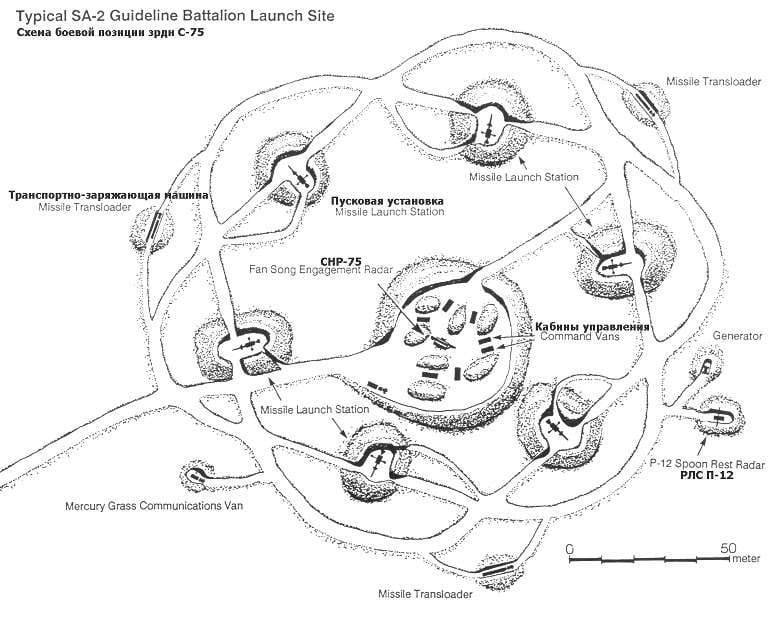
In the "combat operation" mode, the launchers were synchronized with the CHP-75, due to which prelaunch missile guidance towards the target was provided. The launchers could be towed by ATC-59 tracked tractors. The towing speed on paved roads was 30 km / h, on country roads - 10 km / h.
The first version of the mobile air defense system was a six-cab, its elements were installed in KUNGs on the chassis of the ZIS-150 or ZIS-151 vehicles, and an antenna post on the KZU-16 artillery vehicle towed by the ATS-59 tracked tractor. At the same time, the mobility and deployment time of the CA-75 complex were limited by the need to use for installation and dismantling of truck crane antennas. The troop operation of the SA-75 complex showed that the duration of the transfer of the complex from the marching position to the combat position and from the combat position to the marching position was determined mainly by the time it took to deploy and collapse the antenna post and launchers. In addition, when transporting hardware over rough terrain due to lack of resistance to vibration loads, the probability of equipment failure increased sharply. Due to the difficulties in coagulation and deployment, the CA-75 complexes, as a rule, were used to cover stationary objects, and were relocated to 1-2 reserve positions once a year during exercise.
The first divisions of the SA-75 air defense system in the spring of 1958 were launched in Belarus, not far from Brest. Two years later, as part of the Soviet air defense, there were already more than 80 mobile anti-aircraft missile systems. Due to the fact that their own radar equipment was used as part of the air defense missile system: the P-12 radar and the PRV-10 radio altimeter - the anti-aircraft missile division was able to conduct military operations independently.
The meter radar P-12 "Yenisei" could detect targets at a distance of 250 km and an altitude of 25 km. PRV-10 “Cone” radio altimeter, operating in the 10-cm frequency range, according to azimuth target designation from a surveillance radar, provided a fairly accurate measurement of the range and flight altitude of a fighter-type target at a distance of up to 180 km.
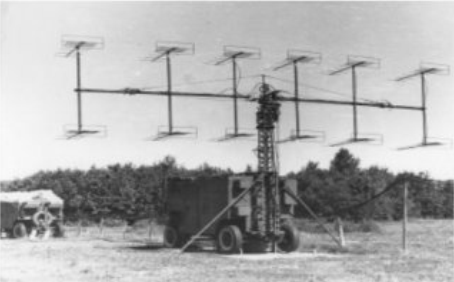
Although the hardware of the air defense missile system was still very raw, and the reliability left much to be desired, the probability of hitting targets flying at medium and high altitudes was much higher compared to anti-aircraft guns of 85-130-mm caliber. At the end of 50, a number of high-ranking Soviet military leaders opposed the allocation of significant resources for large-scale deployment of air defense missile systems. Strangely enough, the opponents of the guided anti-aircraft missiles were not only the moss-borne “ground vehicles”, who were accustomed to relying on anti-aircraft artillery, but also the generals of the Air Force, who reasonably feared cuts in financing fighter aircraft. However, after the capabilities of the CA-50 were demonstrated to the top Soviet military-political leadership at the testing grounds at the end of 75, major doubts disappeared. Thus, during the comparative tests of the SA-75 with anti-aircraft artillery, firing at the Il-28 radio-controlled target flying at an altitude of 12000 m, at a speed of more than 800 km / h, was organized. At first, the target aircraft was unsuccessfully fired upon with two 100-mm anti-aircraft guns of the KS-19 anti-aircraft guns with radar central guidance. After that, the IL-28 entered the zone of destruction of the air defense system and was shot down by a volley of two missiles.
As already mentioned, the first Soviet mobile CA-75 SAM was very raw. To eliminate the shortcomings identified during the operation of the first version, the creation of a modernized complex CA-75М was carried out, with the placement of the equipment in towed vans. Cabs on trailers were more spacious than KUNGs on automobile chassis, which allowed reducing the number of cabs. After reducing the number of cabins of the complex, the number of vehicles used in the anti-aircraft missile division was reduced.
Taking into account the fact that in 50-ies, the air borders of the USSR often violated the American high-altitude reconnaissance aircraft, they demanded from the developers to bring the height of the defeat of air targets to 25 km. Thanks to forcing LRE this requirement was met. Also, the maximum flight speed of the rocket increased slightly. The new missile defense system, which received the designation B-750В (11В), soon supplanted early-warning missiles, which were primarily spent on firing ranges during control and training firing.
Simultaneously with the creation of the 10-cm three-cabin modification, the 6-cm range air defense system, designated C-75 "Desna", was put to the test. The transition to a higher frequency allowed to reduce the dimensions of the antennas of the guidance station and in the long term made it possible to improve the accuracy of the guidance of anti-aircraft missiles and noise immunity. The C-75 Desna missile guidance station used a selection system for moving targets, which made it easier to aim at targets flying at low altitudes and under the conditions of the enemy’s passive jamming. For operation in the conditions of active interference, an automated frequency tuning of the guidance radar was introduced. The SNR-75 equipment was supplemented by the APP-75 launch device, which allowed to automate the development of a missile launch permit depending on the parameters of the target’s flight path when it approaches the complex’s destruction zone, which in turn reduces the dependence on the calculation skills and increases the likelihood of the combat mission. For the C-75 complex, a B-750BH (13D) missile system was created, which differed from the B-750В missiles with the onboard 6-cm range equipment. Until the second half of the 60's seventy-fives 10-cm and 6-cm ranges were built in parallel. The P-1962MP meter radar stations were introduced into the modernized air defense systems in 12.
After adopting the three-cab ZRK C-75 "Desna" 10-cm complexes were intended only for delivery for export. A modification of CA-75M was built for deliveries to socialist countries, and CA-75MK was supplied to the "developing" ones. These complexes differed insignificantly from the equipment of the SNR-75MA missile guidance station, the equipment of state identification and the design meeting the climatic conditions of the country of the customer. In some cases, a special varnish was put on electrical cables that repelled insects — ants and termites. And the metal parts were covered with additional protection against corrosion in hot and humid climates.
China became the first foreign operator of CA-75. Before the start of the 60s, the Americans openly disregard for the inviolability of the air borders of other states. Taking advantage of the fact that in the USSR there were no means capable of stopping the flights of high-altitude reconnaissance aircraft, they freely plowed airspace over the socialist countries. In China, which got into conflict with Taiwan's Kuomintang, the situation was even more complicated. In the second half of 50's, over the Formoz Strait and the adjacent territory of the South China Sea, real air battles took place between combat aircraft of the People’s Republic of China Air Force and the Republic of China Air Force headed by Marshal Chiang Kai-shek. Under cover of aviation, the troops of communist China in 1958 year tried to seize the islands of Kinmen and Matsu, located off the coast of the mainland province of Fujian. Three years earlier, thanks to the massed air support of the Kuomintang, they were driven out from the islands of Yi Jiang Shan and Dachen. After both sides suffered significant losses in the air, large-scale fights between Chinese and Taiwanese fighters ceased, but the Americans and the leadership of Taiwan jealously watched the strengthening of the military power of mainland China and high-altitude reconnaissance aircraft RB-57D and U-2C began over the territory of China In the cabins of which were Taiwanese pilots. High-altitude reconnaissance services were provided to the island of China as part of free American assistance. But the motivation of the CIA of the USA was not based on altruism, the American intelligence services were primarily interested in the implementation of the nuclear program in the PRC, the construction of new aircraft factories and missile test sites.
Initially, the Martin RB - 57D Canberra high-altitude strategic reconnaissance aircraft were used to fly over the mainland of China. This plane was created by Martin on the basis of the British electric bomber Canberra. The single reconnaissance aircraft had an altitude of more than 20 000 m and could photograph ground objects at a distance of up to 3700 km from its aerodrome.
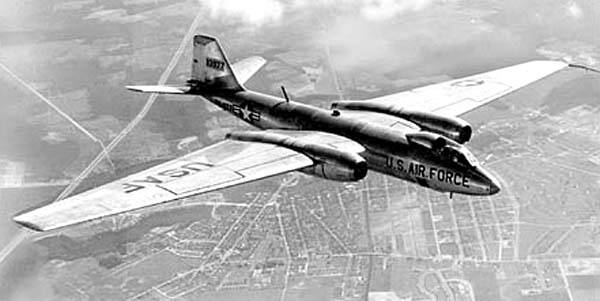
From January to April 1959, high-altitude reconnaissance aircraft made ten lengthy raids into the depths of the PRC territory, and in the summer of the same year the RB-57D flew twice over Beijing. The top Chinese leadership took this as a personal insult, and Mao Zedong, despite his personal dislike of Khrushev, requested to supply weapons capable of obstructing the flights of Taiwanese reconnaissance aircraft. Although by that time relations between the USSR and the PRC were already far from ideal, Mao Zedong’s request was satisfied and, in deep secrecy, five firefighters and one Dvina CA-75 technical division, including 62 11D anti-aircraft missiles, were delivered to China.
In the People's Republic of China, the positions of the SA-75 air defense system were located around important political and economic centers: Beijing, Shanghai, Guangzhou, Xian and Shenyang. To service these anti-aircraft complexes, a group of Soviet specialists was sent to China, who were also engaged in the preparation of Chinese calculations. In the autumn of 1959, the first divisions, serviced by Chinese crews, began combat duty, and already on October 7, 1959, near Beijing, at the height of 20 600, the first Taiwanese RB-57D was shot down. As a result of the close rupture of a powerful fragmentation warhead that weighed 190 kg, the plane fell apart and its fragments scattered over an area of several kilometers. The pilot of the reconnaissance aircraft died.
The Soviet military adviser, Colonel Viktor Slyusar, was directly involved in the destruction of the Kuomintang high-rise scout. According to the radio interception station, which controlled the talks of the deceased pilot RB-57D, until the last moment he was unaware of the danger, and the tape recording of the pilot’s talks with Taiwan broke off in half a word.
The Chinese leadership did not publish information that the spy plane was shot down by air defense weapons, and Taiwanese media reported that RB-57D had an accident, fell and sank in the East China Sea during a training flight. After this, Xinhua made the following statement: On October 7, one American-made Chiang Kai-shek reconnaissance aircraft invaded airspace over the northern regions of the People's Republic of China and was shot down by the air forces of the People’s Liberation Army of China. ”However, the Air Force Command The Republic of China and the CIA officers who ran the Taiwanese high-altitude reconnaissance missions wrote off the loss of RB-57D to a technical malfunction. American experts did not allow the possibility about the fact that a weapon capable of shooting down air targets flying at an altitude of more than 20 km appeared in the People's Republic of China. After this incident, the RB-57D flew from Taiwan to a stop, but this did not mean that the high-altitude reconnaissance flight program was over the mainland of China.
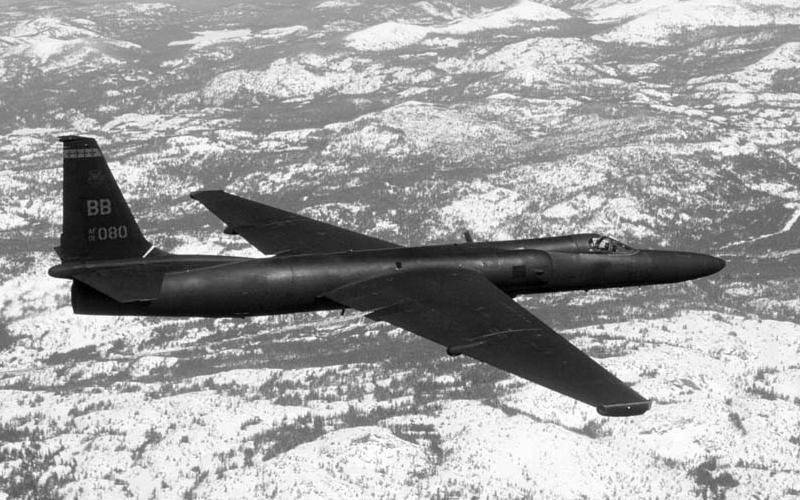
In 1961, a group of pilots from Taiwan underwent training in Lockheed U-2С in the USA for retraining. The plane, created by Lockheed, was able to conduct reconnaissance from a height of more than 21 000 m. It could carry a wide range of photo reconnaissance and radio equipment. The flight duration was 6,5 hours, the speed on the route was about 600 km / h. According to the American data of the Chinese Air Force, six U-2Cs were transferred, which were actively used in reconnaissance operations. However, the fate of these cars and their pilots was unenviable, they were all lost in disasters or became victims of the Chinese SA-75 SAMs. In the period from November 1 1963 to May 16 1969, at least 4 aircraft were shot down by anti-aircraft missile systems and two more crashed in flight incidents. In this case, two Taiwanese pilots, ejected from the aircraft hit by anti-aircraft missiles, were captured.
It is quite natural that the Chinese leadership wanted to cover the maximum number of defense, industrial and transport facilities with highly effective anti-aircraft complexes at that time. To this end, the Chinese comrades requested the transfer of a package of technical documentation and assistance, with the deployment of mass production of the modernized CA-75М in the PRC. The Soviet leadership found it possible to meet an ally, who, incidentally, increasingly demonstrated his own independence, growing into hostility. The intensified Soviet-Chinese disagreements caused the USSR to announce the withdrawal of all military advisers from the People's Republic of China in 1960, which marked the beginning of the winding up of military-technical cooperation between the USSR and the PRC. Under current conditions, the further improvement of anti-aircraft missile weapons in the PRC took place on the basis of the "self-reliance" policy proclaimed in the country at the beginning of the 60-s. Despite the great difficulties and considerable delay in time, in the People's Republic of China at the end of 1966, it was possible to create and adopt its own complex, designated HQ-1 (HongQi-1, "Hongzi-1", "Red Banner-1"). Simultaneously with the development of an anti-aircraft missile system on the basis of the Soviet two-coordinate surveillance radar P-12, the most popular Chinese mobile radar station on standby YLC-8 was created.
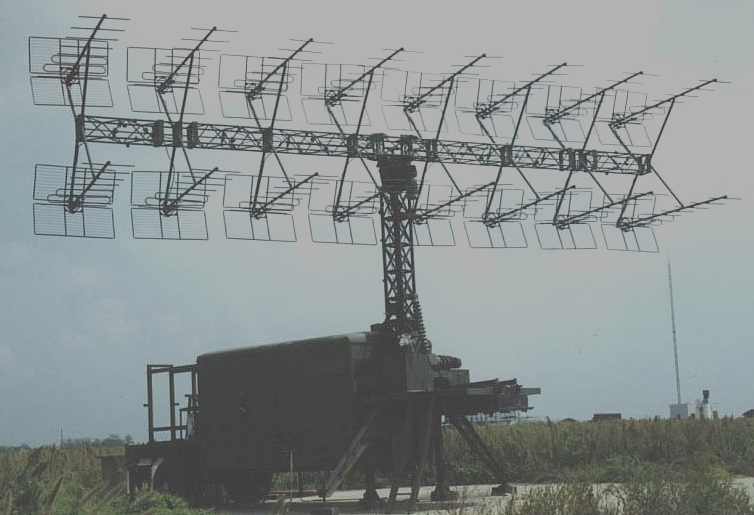
This became possible due to the fact that in 50-s in Soviet higher educational institutions and scientific research institutes thousands of Chinese specialists were trained and practiced. Soviet material and intellectual support made it possible to form its own scientific and technical base in the PRC. In addition, the design of the anti-aircraft missile B-750, which had high characteristics for that time, used materials and technologies that the Chinese industry could well reproduce. However, the “Big Leap” political and economic campaign announced by the Chinese leadership in 1958, and the “Cultural Revolution” that began in 1966, had an extremely negative impact on the release of high-tech military products to the PRC. As a result, the number of built HQ-1 SAMs turned out to be insignificant, and a significant part of the important defense and administrative facilities on the territory of the People's Republic of China in the 60-s failed to cover up with anti-aircraft missiles.
Since the military-technical cooperation with the Soviet Union was practically curtailed in 60-s, China lost the opportunity to legally get acquainted with Soviet innovations in the field of air defense. But the Chinese "comrades", with their characteristic pragmatism, used the fact that Soviet military assistance came through North China by rail to North Vietnam. Soviet representatives have repeatedly recorded the facts of loss during transportation through Chinese territory: radar, elements of anti-aircraft missile systems, anti-aircraft missiles, MiG-21 fighters, aircraft armaments and centralized anti-aircraft gun stations. The leadership of the USSR was compelled to put up with the disappearance of a part of the cargoes occurring during the delivery by the Chinese railway, since the transportation of weapons to Vietnam by sea lasted much longer and was quite risky.
Frank theft committed by the Chinese, and had a downside. In the 60-s in the Soviet Union, sufficiently effective anti-aircraft systems were created, designed for the Air Defense Forces of the USSR and the Air Defense Forces of the Ground Forces, and this technique positively proved itself in the course of hostilities in the Middle East. However, the Soviet leadership, fearing that the newest air defense systems will be in China, almost until the end of hostilities in Southeast Asia did not authorize the supply of new anti-aircraft complexes. Thus, the main air defense system available to the air defense of the DRV was CA-75М, which by that time was inferior in some parameters to the X-NUMX-cm complexes of the C-6 family already adopted. As it is known, the air defense system set by the air defense forces of North Vietnam and the air defense system had a definite impact on the course of military operations, but they could not fully protect against the devastating attacks of American aircraft. Although the Soviet specialists, relying on the experience of confrontation with American warplanes, continuously improved the CA-75M air defense missiles and anti-aircraft missiles delivered to the DRV air defense missile system, the use of more sophisticated anti-aircraft weapons could have inflicted heavier losses on the Americans, which of course would have affected the end of the war.
Despite the lack of Soviet assistance during the "Cultural Revolution", albeit with a slip, but in the PRC continued to create their own models of weapons. One of the ambitious programs, brought to the stage of practical implementation, was the creation of air defense missile systems, whose guidance equipment worked in the 6-cm frequency range.
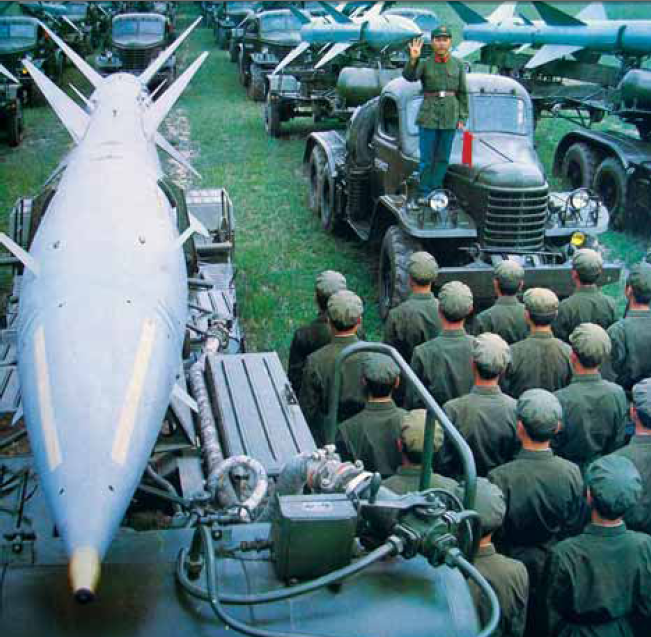
In this case, there was a great merit of Chinese intelligence, which was able to gain access to the Soviet C-75 complexes supplied to Arab countries. It is also possible that some materials on promising anti-aircraft missile systems were still shared with the Chinese side before the cessation of military-technical assistance.
One way or another, but in 1967, at the rocket range northeast of Jiuquan city, in Gansu province, on the edge of the Badin-Jaran desert (later a cosmodrome was built in this area), tests of the advanced HQ-72 air defense system began in the area 2 . The tests ended with the adoption of the complex for service, but it began to en masse to the troops only at the beginning of the 70-s.
GooEgle Earth Satellite Image: Test Site No. 72 at the Jiuquan Missile Range
In fact, Chinese experts repeated the path traversed before by Soviet designers, using ready-made rockets from the HQ-1 complex and adapting the new radio command equipment to them. The station of guidance of rockets underwent much greater changes. In addition to new electronic units with other vacuum tubes, more compact antennas have appeared. For coagulation and deployment of which is no longer required to use cranes.
HQ-2 complexes of various modifications for a long period of time were the basis of the ground component of the Chinese air defense system. They were exported and involved in a number of armed conflicts. However, we are talking about this, and the development options for the clones of the Soviet air defense system C-75 produced in China will be discussed in the next part of the review.
To be continued ...
Based on:
http://pvo.guns.ru/s75/s75.htm
https://123ru.net/brest/23440973/
https://defendingrussia.ru/enc/rakety_pvo/zenitnyj_raketnyj_kompleks_s75-597/
http://bastion-karpenko.ru/system-s-75/
https://www.globalsecurity.org/military/world/china/hq-1.htm
https://www.globalsecurity.org/military/world/china/hq-2-pics.htm
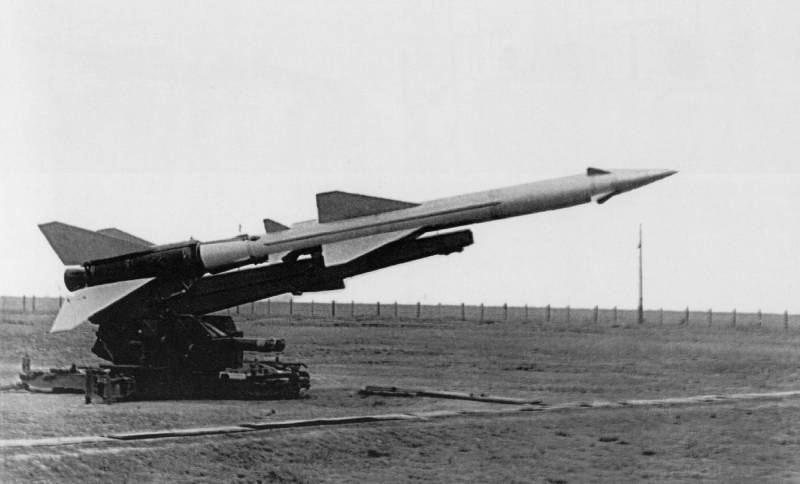
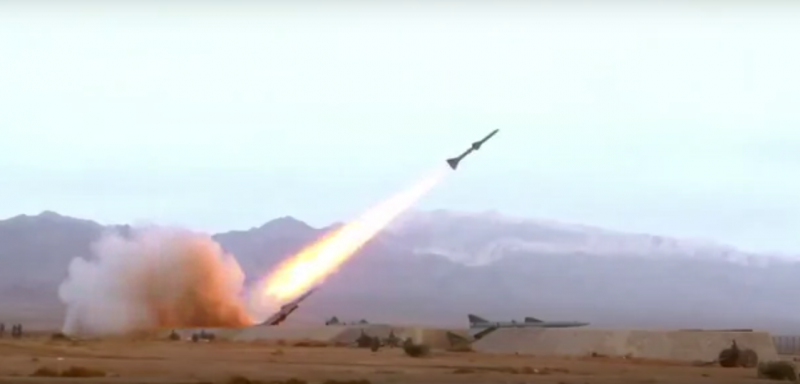
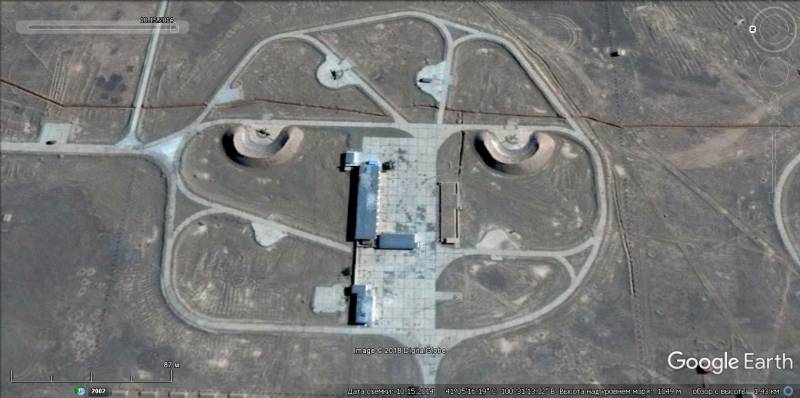
Information